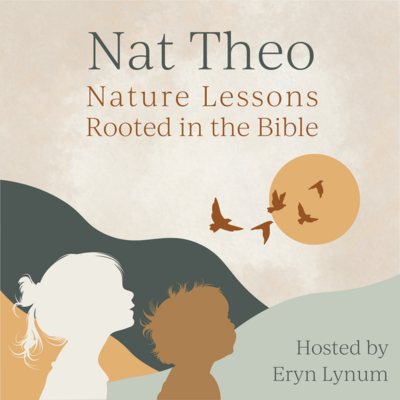What Are The Best Foods To Eat Organically?
The Nature of Rest
What the Bible and Creation Teach Us About Sabbath Living
Intentional Parenting
Nature Studies
Apologetics
Adventure
Free Resource
Entrepreneurship
Homeschooling
Faith
Books
Categories
Master Naturalist, Bible teacher, author, wife, and mama of four! Join our adventures of discovering God while adventuring in creation.
I'm Eryn
Hey there!


Listen Now






Order now

You Don’t Have to Eat Everything Organically!
Have you ever wondered what the most important foods to eat organically are? Organic produce costs an average of 29% more than conventionally grown produce (Tracie McMillan 2012). And so with every type of food– from a head of lettuce to chocolate syrup– now boasting that “USDA Organic Certified” label, which foods really offer enough nutritional benefit to warrant the extra cost?
I began to answer that question last week, click here to read part 1!
My family simply cannot afford to purchase all of our food organically; many people can’t. And the good news is that it is not necessary to eat all of your food organically. When it comes to choosing organics, some foods really do offer exponentially greater health benefits–but not all of them. When you apply a little bit of knowledge and strategy to your organic plan of action, you can optimize the nutrition in your diet while protecting your budget from exploitation.
Last week, although I did point out which fruits and vegetables are more worth their organic weight, I ended with the sightly unconventional claim that I do not believe fruits and vegetables are the most important foods to eat organically. No, when it comes to where I invest most of our grocery budget in organics, I reach for butter, eggs, beef, milk, and other animal products!
“Wait–You Eat Animal Products?!”
{Why We Don’t Eat A Plant-Based Diet}
When we traded in our modern American diet for whole foods two years ago, we began with an almost-vegetarian kick. Our knowledge of whole foods and nutrition was in the embryonic stage, and so we were at the mercy of many current whole food fads and debates; this included the strong push to not eat any animal products (meat and dairy), but instead to eat a diet comprised of only plants (a “plant-based diet”).
For a while we fared just fine, and learned a lot about vegetarian cooking; how to prepare vegetables and use them creatively in a wide range of dishes (because one can only tolerate so many salads…) But there were a couple of reasons that a plant-based diet did not work for us:
- My husband was roofing 40+ hours a week. His highly physical job required him to take in over 4,000 calories a day. It would require an immense amount of vegetables to meet that caloric need.
- We live in the Midwest, where fresh local produce is not available year-round, so we would have to be eating a whole lot of imported (and expensive) produce during the colder months.
Although we enjoyed some aspects of our plant-based diet, we ultimately realized that very few people can sustain or thrive off of such a diet for an extended amount of time. This is because traditional meats and dairy provide our bodies with a very dense concentration of nutrients and minerals that would otherwise be unavailable to us.
In light of these things, we decided to begin re-incorporating meat and dairy into our diet. At first, I was fearful. Everything I had read about animal products being toxic kept ringing in my mind, and my biggest fear was that we were making a poor dietary decision that would poison our bodies. But then I started to research, and concrete facts began to overshadow and dismiss my fears (isn’t that usually the case??)
Why is Organic Meat and Dairy More Important than Organic Fruits and Vegetables?
Without getting too scientific, let me introduce this one idea that has revolutionized the way I view food: bio-concentration.
Doctor Catherine Shanahan in her book “Deep Nutrition” instructs: “If you have a limited budget and you want to get organic, skip the low-fat fruits and vegetables and head over to the butcher aisle”. And, “Organic animal products give you more bang for your buck because they benefit from bio-concentration.”
Bio-concentration says that meat and dairy products, over fruits and vegetables, contain a higher concentration of either:
- Healthful nutrients, vitamins, and minerals
- Or unhealthy toxins and pesticides
Nina Planck seconds this argument in her book “Real Food”:
Contrary to what many popular diet fads of our day tell us, there is a healthy, wholesome, and very beneficial way to include meat and dairy in our diets. The key here, like in every other area of our diet, is to understand what exactly we are putting into our bodies.
We have to get to the source of our food!
When we eat meat and dairy, we have to understand, as best as we can, where that animal came from, and what that animal’s diet was like. The best way to do this is to buy directly from a farmer, whether from the farm itself or at a farmer’s market. The next best way is to buy from a health food store where they are happy to point you to their sources, and help you understand the origins of where your food is coming from.
What are the Best Organic Dairy Products to Buy? (If You Don’t Have Access to Raw Dairy)
Just a quick word on this, and most of it is comprised of my own opinion. There are two major organic dairy brands: Horizon and Organic Valley. We choose to buy Organic Valley, as it works with a co-op of small farmers who raise their cows on grass. And their organic “Pasture Butter” is absolutely the most luscious butter I have ever eaten.
There is One Step Further Than Organic
Okay–I may have tricked you with this two-part series. You see, there is a missing part. Or more like it is the evening before I publish this post, and I just now realize that I have left out a huge (HUGE) factor that drives the decisions in what meat and dairy products my family eats.
Although we do purchase organic milk, cream, yogurt, and other dairy products, whenever possible we try to take it a step further and make sure these products come from grass-fed cows. The same rule goes for our meat. And so I challenge you–stick with me as I dive a little deeper into this issue next week. I will remove the “organic” label from the equation, and take a closer look at something far more important: the living conditions and diets of the animals our food comes from.
Trust me, if you want to learn how to incorporate meat and dairy into your diet in the most delicious nutritious way possible, you won’t want to miss next week’s post!


learn more
Raising kids stirs something deep in our souls — an innate knowing that our time is finite. Taking my kids outside in creation, I’m discovering how to stretch our time and pack it to the brim with meaning. God’s creativity provides the riches of resources for teaching the next generation who He is and how He loves us. Join our adventure and discover inspiration and resources for refusing rush, creating habits of rest, living intentionally, and making the most of this beautiful life!
I'm Eryn, Master Naturalist, Author, & Bible Teacher
Hey there!


Receive free inspirational resources for refusing rush, creating habits of rest, parenting with intentionality, and teaching our kids who God is through what He has made!
Inspired
Be
Brand + Website by Amarie Lael Design | TERMS & CONDITIONS + PRIVACY POLICY | Copyright 2011 - 2025 Eryn Lynum
Contact
Speaking & media
About
Books
Shop
Videos & Interviews
Email List
Stories
Free Downloads
Resources
Home
@erynlynumauthor


The Nature of Rest
What the Bible and Creation Teach Us About Sabbath Living
Now Available!
Order
X
Signed Copy



Add a Comment